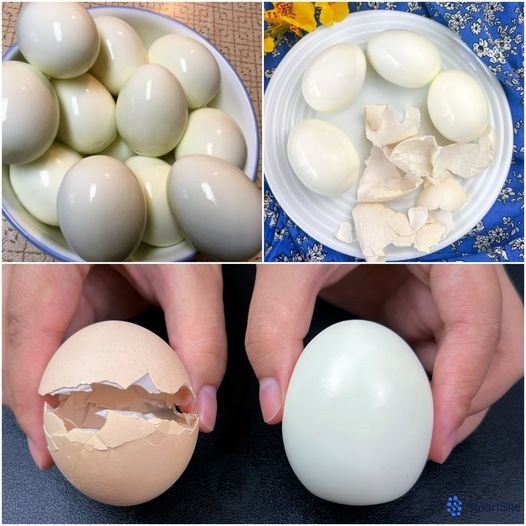Achieve Perfect Boiled Eggs Every Time: A Simple Guide
Are you tired of struggling to get the perfect boiled egg? Look no further! We have a simple method that guarantees deliciously cooked eggs, tailored to your liking. Whether you prefer them soft, medium, or hard-boiled, this foolproof technique will leave you satisfied every single time.
Boiled eggs are not only delicious but also packed with protein, vitamins, and minerals, making them an excellent choice for a healthy meal. But let’s get to the main event – the perfect boiled egg. Here’s what you’ll need:

Ingredients and Tools:
- Fresh eggs
- A pot with a lid
- A bowl of ice water for cooling
- A timer
Step-by-Step Process for Flawless Boiled Eggs:
Step 1: Room Temperature Eggs
Start with eggs at room temperature. This simple trick helps prevent the shells from cracking when they encounter hot water. If your eggs are straight from the fridge, you can place them in warm water for a few minutes before boiling.
Step 2: Boiling Water
Fill a pot with enough water to fully cover the eggs. Bring the water to a full boil over high heat. Ensuring there’s enough water to cover the eggs helps them cook evenly.
Step 3: Adding the Eggs
Once the water is boiling, reduce the heat to low (just enough to maintain a simmer) and gently lower the eggs into the water using a spoon or ladle. This keeps them still and prevents any unwanted cracks. Dropping eggs into boiling water abruptly can cause them to crack, so handle them gently.
Step 4: Cooking Time
The cooking time varies depending on your desired consistency:
- Soft-boiled eggs: Cook for about 4-6 minutes.
- Medium-boiled eggs: Cook for about 6-9 minutes.
- Hard-boiled eggs: Cook for about 10-12 minutes.
Remember to adjust the cooking time slightly based on the egg size and your altitude. Larger eggs or higher altitudes may require a bit more time, so monitor your eggs closely.
Step 5: Cooling the Eggs
Once the eggs are cooked to perfection, remove them from the hot water using a slotted spoon and immediately transfer them to a bowl of ice water. This quick cooling process stops the cooking and makes peeling a breeze. Let the eggs sit in the ice water for about 5 minutes.
Step 6: Peeling
After the eggs have cooled for around 5 minutes in the ice water, gently crack the shells and peel them under a small stream of running water. The water helps separate the shell from the egg, making it easy to peel. If the shells are still difficult to remove, return the eggs to the ice water for another minute or two.
Helpful Tips for Consistent Results:
- Freshness: Use relatively fresh eggs, but not the freshest ones you can find. Slightly older eggs are easier to peel because the pH level changes over time, reducing the stickiness of the albumen to the shell.
- Consistency: Once you find the method and timing that work best for your preferred level of doneness, stick to it consistently. Keeping a note of the time and the conditions can help replicate the perfect egg every time.
- Storage: Boiled eggs can be stored in the refrigerator for up to a week. Keep them in their shells until you’re ready to enjoy them to maintain their freshness. If peeled, store them in an airtight container with a damp paper towel to prevent them from drying out.
Why This Method Works:
Boiling eggs perfectly may require a bit of practice, but the rewards are well worth it. This method isn’t just about simplicity; it’s about bringing out the best in a humble egg. The combination of room temperature eggs, gentle handling, precise cooking times, and immediate cooling results in eggs that are cooked exactly how you like them, every time.
Say goodbye to overcooked or undercooked eggs and hello to flawlessly cooked ones every time. So why not give it a try? Prepare to be amazed by the incredible taste and texture of your boiled eggs, each and every time! Whether you enjoy them plain, in salads, or as a snack, perfect boiled eggs are within your reach with this simple and effective method.

